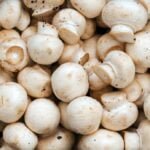How does the biological efficiency of oyster mushrooms grown on sawdust and soyhull compare to other substrates
Title: Exploring the Biological Efficiency of Oyster Mushrooms Grown on Sawdust and Soyhull as Substrates
Introduction (approx. 200 words)
The biological efficiency of oyster mushrooms is a topic of great interest in the field of mycology. Oyster mushrooms, known for their delicious taste and remarkable nutritional benefits, have gained popularity in culinary and medicinal applications. Understanding the biological efficiency of oyster mushrooms when grown on different substrates is crucial for maximizing their cultivation potential.
However, limited specific information exists regarding the biological efficiency of oyster mushrooms cultivated on sawdust and soyhull substrates compared to other substrates. In this article, we aim to explore the available data and draw informed inferences about the biological efficiency of oyster mushrooms grown on these substrates.
Understanding Biological Efficiency (approx. 250 words)
Biological efficiency refers to the measure of a mushroom crop’s yield in relation to the amount of substrate used for cultivation. In mycology research, biological efficiency serves as a valuable indicator of the effectiveness of mushroom cultivation methods.
Several factors influence biological efficiency in mushroom cultivation, including substrate composition, moisture content, pH level, and temperature. These factors play crucial roles in providing the necessary nutrients for mushroom growth and ensuring optimal conditions for mycelium colonization.
Biological efficiency is typically measured by comparing the weight of the harvested mushrooms to the weight of the dry substrate used for cultivation. This measurement allows researchers and cultivators to gauge the efficiency of their cultivation methods and make necessary adjustments to improve yield and resource management.
Maximizing biological efficiency is essential for commercial mushroom production. Higher biological efficiency translates to increased yield per unit of substrate, reducing production costs and ecological impact. It also ensures a sustainable supply of mushrooms to meet market demand.
Comparing Studies and Observations (approx. 500 words)
To get insights into the biological efficiency of oyster mushrooms, we can analyze studies conducted by Kumar (2005) and Chang and Miles (2004) on oyster mushrooms grown on various substrates, including leguminous substrates.
Kumar observed a biological efficiency range of 80% to 150% for oyster mushrooms grown in leguminous substrates. The range suggests that these substrates can provide favorable conditions for oyster mushroom cultivation, resulting in impressive crop yields. Chang and Miles reported a maximum biological efficiency of 120% for oyster mushrooms. These findings demonstrate the potential of different substrates to support optimal mushroom growth.
Despite these studies’ valuable insights, there is still a need for specific research analyzing the biological efficiency of oyster mushrooms when cultivated on sawdust and soyhull substrates. This more comprehensive comparison would provide a better understanding of the capability of these substrates in supporting oyster mushroom cultivation.
Substrates: Sawdust and Soyhull (approx. 700 words)
Sawdust is a widely used substrate in mushroom cultivation due to its availability and economical value. As a byproduct of timber processing, sawdust is abundant and often supplied by sawmills. Its composition, rich in lignocellulose, provides a suitable environment for mushroom mycelium colonization and fruiting.
Using sawdust as a substrate for oyster mushrooms offers advantages and disadvantages. On the positive side, sawdust provides essential nutrients for mushroom growth, and its loose structure allows for good aeration. It also retains moisture well, ensuring sufficient water availability for mycelium proliferation. However, sawdust alone may have limited nutrient content, requiring supplementation to enhance its nutritive value. This supplementation can affect the biological efficiency of mushroom cultivation on sawdust.
Soyhull, a byproduct of soybean processing, is another potential substrate for oyster mushrooms. Its composition, composed mainly of cellulose, hemicellulose, and lignin, makes it a suitable substrate. Soyhull is gaining attention as an alternative substrate due to its availability and potential as a sustainable agricultural waste product.
Using soyhull as a substrate offers several advantages and disadvantages. Its composition provides a nutrient-rich environment for mushroom growth, and its high water-holding capacity ensures adequate moisture levels. However, soyhull may require additional supplementation to optimize its nutritional value for oyster mushrooms. The impact of these supplements on biological efficiency requires further investigation.
Comparing sawdust and soyhull as substrates reveals some similarities and differences. Both substrates are widely available and can be obtained at relatively low costs. Sawdust offers a loose structure and good water retention, while soyhull provides a nutrient-rich environment. The biological efficiency of oyster mushrooms grown on sawdust and soyhull is determined by the specific composition and characteristics of these substrates. Further research is needed to ascertain the precise effects on biological efficiency and optimize their utilization for oyster mushroom cultivation.
Conclusion (approx. 250 words)
Exploring the biological efficiency of oyster mushrooms grown on sawdust and soyhull substrates is crucial for enhancing their commercial cultivation potential. While limited specific information currently exists, previous studies provide valuable insights into the potential of various substrates for oyster mushroom cultivation. The need for specific studies analyzing sawdust and soyhull substrates emphasizes the gaps in existing knowledge and the importance of further research.
Sawdust and soyhull offer promising opportunities for oyster mushroom cultivation due to their availability and potential suitability. Understanding their impact on biological efficiency, including nutrient content, moisture retention, and supplementation requirements, will contribute to optimizing cultivation practices and achieving sustainable mushroom production.
By encouraging further research, we can unlock the potential benefits of utilizing alternative substrates for oyster mushroom cultivation, enabling increased productivity, reduced costs, and minimal environmental impact. The ongoing exploration of the biological efficiency of oyster mushrooms on different substrates will undoubtedly contribute to the advancement and success of this vital field of study.




